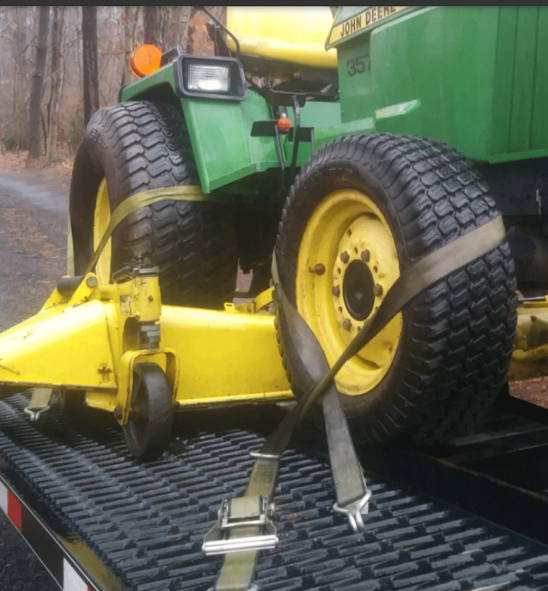Ensure The Truck Sits on a Level Surface
Park your truck on a flat surface with no bumps. The truck motor should be turned off, and the brakes engaged to keep the truck from moving during loading.
Have the Ramps Ready and Attached to the Truck
Open up the ramps and secure them to the truck’s tailgate while following the manufacturer’s instructions. Ramps are equipped with safety straps which you will tighten to the truck’s open bed. The straps should be tight to prevent the ramp from slipping and loading, which might translate to severe injuries to you and damage to the equipment.
Load Your Mower up the Truck
Check and adjust the ramps’ width and ensure that it matches the width of the mowers’ front tires so that they move up the center of both ramps. Set the equipment into low gear and give it sufficient throttle to move it up the ramps to ensure it does not stop halfway during loading. If your mover has a hydrostatic transmission, moving it up the ramps at a significantly lower speed is safer.
Drive your mower up the ramps and unto the truck at a steady speed. Position it as forward as possible on the trick bed to ensure that most of its weight is supported by the truck’s rear axle for a safe, smooth ride during shipping.
Safely Secure Your Mower with Straps
Turn off the mower’s engine and engage its parking brake to keep it from dislodging during transit. Next, use the ratchet straps to secure the mower in position to ensure it does not slip. Finally, close the tailgate, disconnect the ramps and load securely on the truck to use them during the unloading process once you are at your destination.
The easiest and safest way of shipping your mower is by seeking the services of renowned heavy hauling companies such as Tractor Transport. Besides having all the equipment required for the hauling process, they are trained and experienced in handling such tasks from start to finish leaving you to handle other important aspects of your project.


